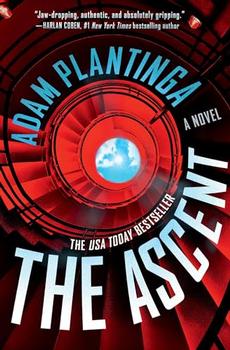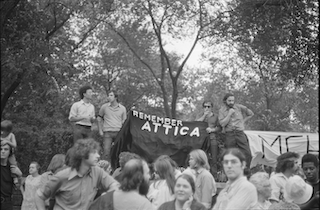Summary | Excerpt | Reviews | Beyond the Book | Read-Alikes | Genres & Themes | Author Bio

This article relates to The Ascent
In The Ascent, Adam Plantinga imagines what it would be like to climb through six levels of a prison in utter chaos: cell doors opening, guards hiding or dead, inmates murdering each other and so much worse. It does not require fiction, however, to imagine these hellscapes: history has many examples of such mayhem. Below are two of America's deadliest prison uprisings.
Attica, 1971
 One of the most famous occurred over five days in September 1971 at the Attica State Correctional Facility in upstate New York. The prison's chronic overcrowding and abysmal living conditions (e.g., once-a-week showers and one roll of toilet paper per prisoner per month, among other indignities) erupted into violence on September 9 when inmates overpowered guards and gained control of a central area with access to all cell doors. More than 2,200 inmates joined the rioting that resulted in a guard's death and the burning of the prison chapel. After state troopers stormed the prison and regained control of three of the four cell blocks, roughly 1,200 prisoners retreated to the large open-air D yard with thirty-nine prison staff as hostages.
One of the most famous occurred over five days in September 1971 at the Attica State Correctional Facility in upstate New York. The prison's chronic overcrowding and abysmal living conditions (e.g., once-a-week showers and one roll of toilet paper per prisoner per month, among other indignities) erupted into violence on September 9 when inmates overpowered guards and gained control of a central area with access to all cell doors. More than 2,200 inmates joined the rioting that resulted in a guard's death and the burning of the prison chapel. After state troopers stormed the prison and regained control of three of the four cell blocks, roughly 1,200 prisoners retreated to the large open-air D yard with thirty-nine prison staff as hostages.
A tense stand-off began between prisoners and state authorities as inmates made a list of thirty demands. New York State authorities agreed to twenty-eight of the thirty, denying the prisoners' demand for amnesty for their recent actions. Prisoners refused the state's offer, and after calls to release the hostages were again denied, Governor Nelson Rockefeller ordered state forces to storm the prison yard on September 13. During the assault, twenty-nine inmates and ten hostages were killed, all from gunfire. It was the deadliest prison uprising in U.S. history with forty-three people killed, including a prison guard and three inmates who were killed by other prisoners just after the insurrection began.
New Mexico State Penitentiary, 1980
For inmates at the New Mexico State Penitentiary near Santa Fe, similar issues of overcrowding and substandard conditions lit the fuse to a violent 36-hour nightmare, February 2–3, 1980. It started when several prisoners, intoxicated on a home brew of kitchen ingredients, overpowered guards and gained control of the command center, taking twelve prison guards hostage. While reform-minded inmates made a list of demands for state authorities (e.g., an end to overcrowding and harassment by guards, better food and more educational opportunities, to name a few), the extremely violent criminals banded together into "death squads" and exacted revenge against other inmates they regarded as snitches.
This insurrection, though much briefer and slightly less deadly than its predecessor, still "left much of the prison south of Santa Fe a smoking hulk," according to an article in New Mexico History, with millions of dollars in damages. This prison revolt left thirty-three inmates dead and more than ninety with serious injuries from "beatings, stabbings, rapes, and overdoses."
In the end, shocking prison revolts like those at Attica and the New Mexico State Penitentiary raised public and governmental awareness of abuse and neglect in America's prison systems. Although improvements have been made, there is still much to learn on how prisons can both ensure public safety and effectively rehabilitate incarcerated people.
Demonstrators in NYC protest against conditions contributing to Attica uprising, September, 1971, courtesy of NYC Department of Records and Information Services.
Filed under People, Eras & Events
![]() This article relates to The Ascent.
It first ran in the February 21, 2024
issue of BookBrowse Recommends.
This article relates to The Ascent.
It first ran in the February 21, 2024
issue of BookBrowse Recommends.
Dictators ride to and fro on tigers from which they dare not dismount. And the tigers are getting hungry.
Click Here to find out who said this, as well as discovering other famous literary quotes!
Your guide toexceptional books
BookBrowse seeks out and recommends the best in contemporary fiction and nonfiction—books that not only engage and entertain but also deepen our understanding of ourselves and the world around us.